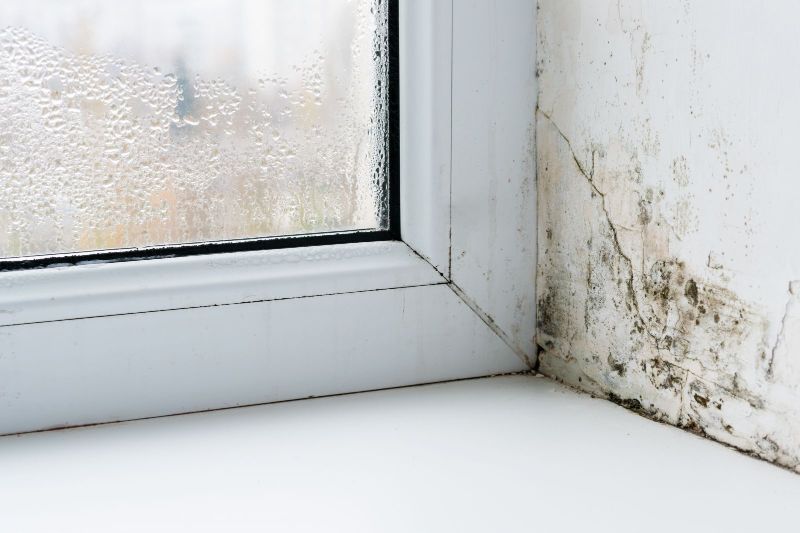Mold is a common problem that many homeowners face, yet its dangers are often underestimated. While it may seem like a mere cosmetic issue, mold damage can have serious implications for your health and the structural integrity of your home. In this article, we will explore the hidden dangers of mold damage and why it is crucial to address this issue promptly and effectively.
Health Risks
One of the most significant concerns associated with mold damage is the potential health risks it poses to you and your family. Mold spores are microscopic and float in the air, making them easily inhalable. When these spores are inhaled, they can cause a range of health problems, particularly for individuals with respiratory conditions or weakened immune systems.
Exposure to mold can lead to allergic reactions, such as sneezing, coughing, and itchy eyes. It can also trigger asthma attacks or worsen existing asthma symptoms. In some cases, mold exposure may even result in more severe respiratory issues, including bronchitis or pneumonia. Additionally, certain types of mold produce mycotoxins, which can have toxic effects on the human body when ingested or inhaled over an extended period.
Structural Damage
Beyond the health risks, mold damage can wreak havoc on the structural integrity of your home. Mold thrives in damp and humid environments, often growing on surfaces such as walls, ceilings, and floors. As it spreads, mold releases enzymes that break down organic materials, including wood and drywall. This can weaken the structural components of your home, leading to potentially costly repairs.
Mold damage is not always visible to the naked eye, as it can grow behind walls or beneath flooring. If left untreated, it can cause significant damage to the building materials, compromising the stability of your home. Moreover, mold can also penetrate porous surfaces, such as insulation or carpeting, making it difficult to eradicate completely without professional intervention.
Reduced Indoor Air Quality
Mold damage can have a detrimental impact on the indoor air quality of your home. As mold spores circulate through the air, they can be inhaled, leading to respiratory issues. Moreover, the presence of mold often produces a musty odor that can be unpleasant and difficult to eliminate.
Poor indoor air quality can affect the overall comfort and well-being of your household. It may cause persistent coughing, headaches, fatigue, or even cognitive difficulties in some cases. If you notice a musty smell or experience unexplained health symptoms, it is essential to investigate the possibility of mold growth in your home.
Increased Energy Consumption
Mold damage can also have indirect effects on your household's energy consumption. As mold grows, it creates a barrier on surfaces, preventing them from efficiently conducting heat or cold. Consequently, your HVAC system may need to work harder to maintain a comfortable temperature, leading to increased energy bills.
Additionally, if mold is present in your insulation or ductwork, it can compromise the effectiveness of these systems. Insulation contaminated with mold may lose its thermal properties, reducing its ability to retain heat in winter or repel heat in summer. Similarly, mold in ductwork can obstruct airflow, resulting in reduced heating or cooling efficiency.
Prevention and Remediation
Given the potential dangers associated with mold damage, it is crucial to take preventive measures and address the issue promptly. Here are some steps you can take:
Control moisture levels: Mold thrives in damp environments, so it is vital to keep moisture levels in check. Fix any leaks or plumbing issues promptly and ensure proper ventilation in areas prone to moisture, such as bathrooms and kitchens.
Monitor humidity: Maintain indoor humidity levels below 60% to discourage mold growth. Consider using dehumidifiers in particularly humid areas of your home.
Proper ventilation: Ensure adequate airflow throughout your home by using exhaust fans, opening windows, and using air purifiers with HEPA filters.
Promptly address water damage: If you experience any water damage, whether from leaks, floods, or spills, it is essential to dry the affected area within 24-48 hours to prevent mold growth.
If you suspect or identify mold growth in your home, it is advisable to seek professional assistance. Mold remediation experts have the knowledge, tools, and protective equipment necessary to safely and effectively remove mold from your home.
Mold damage is not a problem to be taken lightly. Its health risks, potential structural damage, impact on indoor air quality, and increased energy consumption are all compelling reasons to address mold issues promptly. By taking preventive measures, monitoring moisture levels, and seeking professional assistance when necessary, you can protect your health and ensure the longevity of your home. Remember, when it comes to mold damage, early intervention is key.

